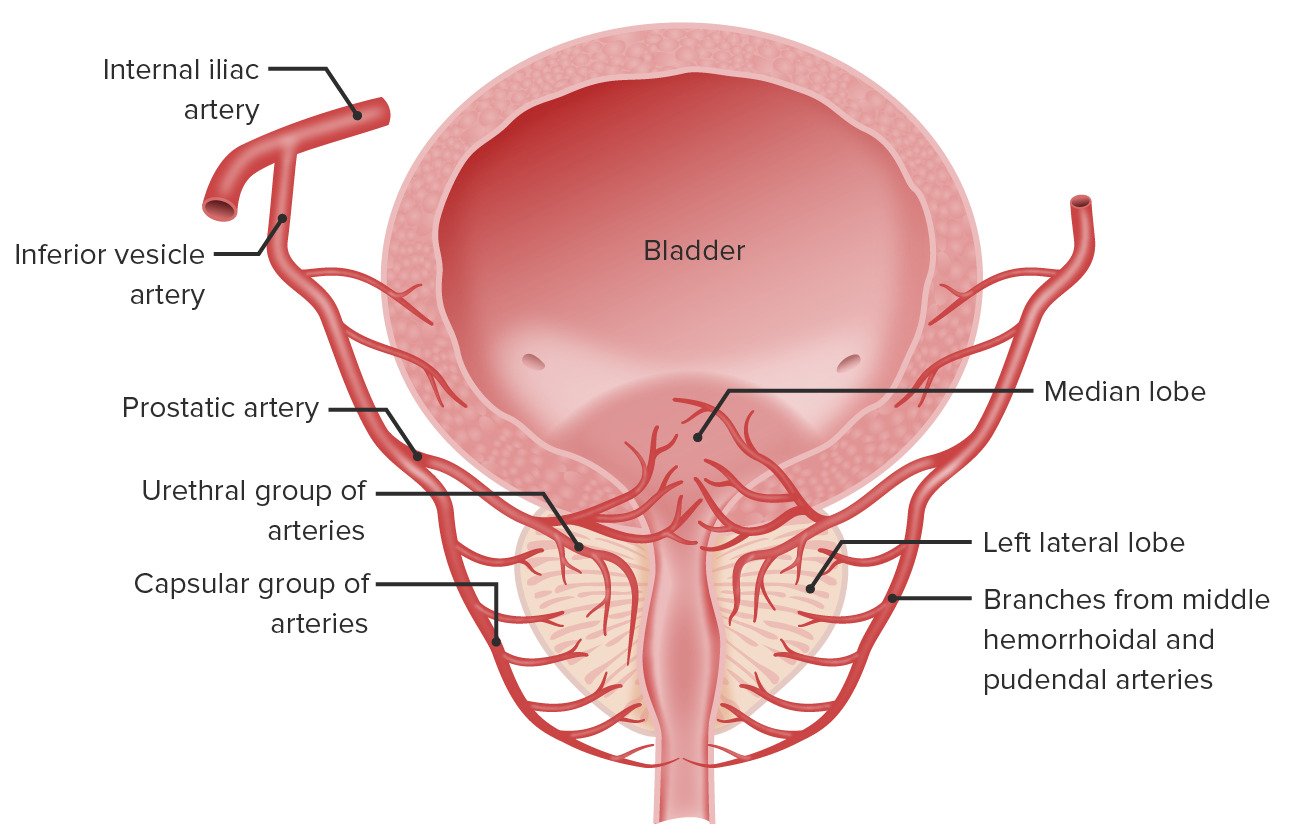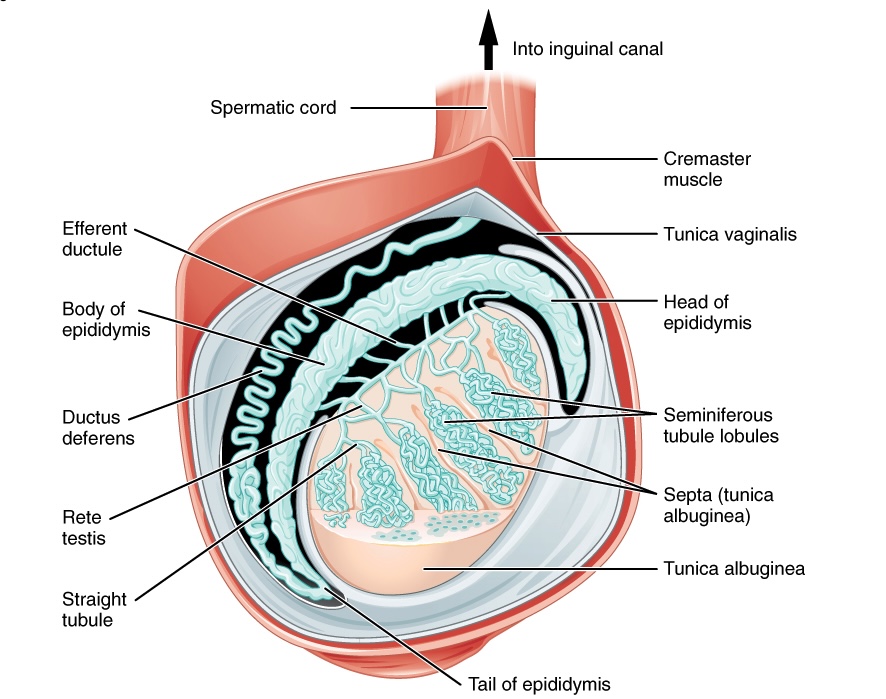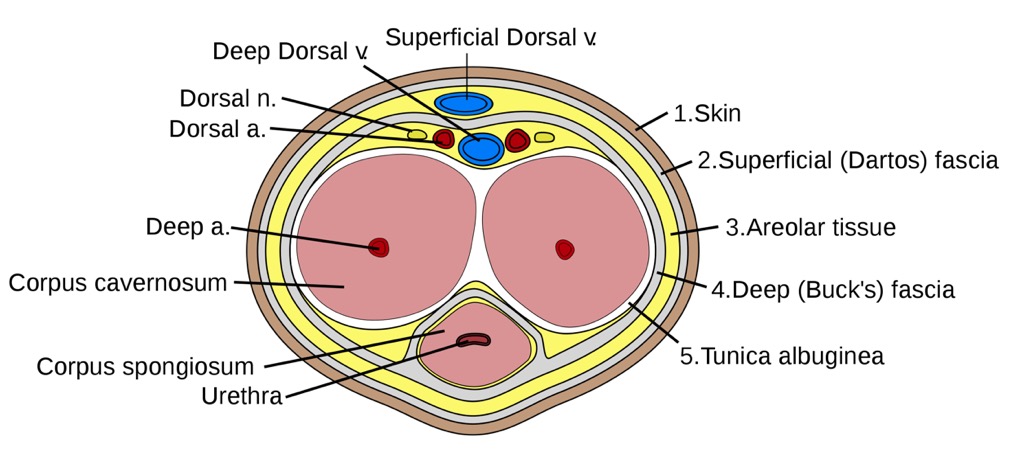Playlist
Show Playlist
Hide Playlist
Testis: Hormonal Control of Spermatogenesis – Male Reproductive System
-
Slides 06 Human Organ Systems Meyer.pdf
-
Reference List Histology.pdf
-
Download Lecture Overview
00:00 This is just the summary of the hormonal control of spermatogenesis, and the control of both the production of testosterone and also inhibin from the Sertoli cell. And basically, there are negative feedbacks involved. 00:20 The Leydig cell produces testosterone under the influence or stimulation of LH, and produces testosterone. That testosterone is maintained at a fairly constant level in the blood and it’s concentrated in the seminiferous tubules by the Sertoli cells. If those concentrations go above a certain level, then there’s a negative feedback on LH in the pituitary to slow down the process of testosterone production. Similarly, inhibin, which concentrates that testosterone in the seminiferous tubule, that is feeding back also on LH, again, to monitor and maintain a constant level of testosterone being produced by the Leydig cell. 01:18 Remember the Sertoli cell also produces the androgen binding protein under the stimulation of FSH. 01:28 And that concentration, again, can provide a negative feedback, again, to make sure that that concentration is maintained at normal levels. So there’s a number of feedback mechanisms going on to control steroidogenesis and also the production of various substances from the Sertoli cell, involving the pituitary gland. And it’s important that you understand those feedbacks and also the effect of each hormone have on the parts or the cells of the male reproductive system that I’ve just described. So, in summary, the testis contains a vast surface area of seminiferous epithelium. And that epithelium produces the spermatozoa. 02:20 The spermatozoa at this stage, when they’re released into the tubule lumen, are not quite mature. They receive that maturity and motility in the ductus epididymis. The Leydig cells secrete the androgens of which testosterone is the major product. And the Sertoli cells are very, very important. They have a number of functions, three of which I’ve summarized there. They support the spermatocyte. They are even phagocytes as well, I’ve mentioned that. 02:52 They secrete androgen binding protein to concentrate testosterone in the seminiferous epithelium, which is essential for spermatogenesis. And they contribute to creating a very important blood-testis barrier. So I hope you now understand a lot about the histology of the testis, the structure of the testis and all the cells within it, and the importance of all the hormones created by the Leydig cell and the Sertoli cell, and the interaction of these cells with the pituitary gland. So thank you for listening to this lecture.
About the Lecture
The lecture Testis: Hormonal Control of Spermatogenesis – Male Reproductive System by Geoffrey Meyer, PhD is from the course Reproductive Histology.
Included Quiz Questions
Which of the following statements regarding the function of follicle-stimulating hormone is MOST ACCURATE?
- It stimulates Sertoli cells to secrete androgen binding protein.
- It stimulates Leydig cells to secrete estradiol.
- It stimulates Leydig cells to secrete testosterone.
- It inhibits the secretion of androgen binding protein by Sertoli cells.
- It inhibits the secretion of testosterone by Leydig cells.
What stimulates the production of androgen-binding protein?
- Follicle-stimulating hormone
- Luteinizing hormone
- Inhibin
- Estrogen
- Progesterone
Which of the following is the final site for maturation of the spermatozoa?
- Epididymis
- Seminiferous tubules
- Vas deferens
- Seminal vesicle
- Prostate
Customer reviews
5,0 of 5 stars
| 5 Stars |
|
5 |
| 4 Stars |
|
0 |
| 3 Stars |
|
0 |
| 2 Stars |
|
0 |
| 1 Star |
|
0 |







